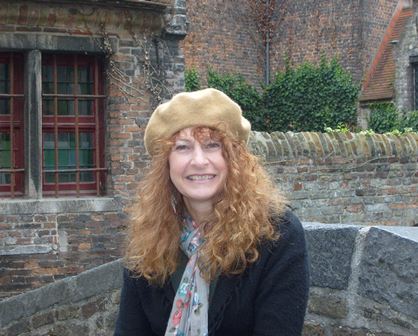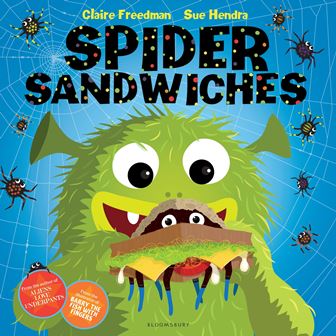Claire Freedman writes funny, silly, engaging picture books - and here she tells us what inspires her, how to cope with rejection and what she feels makes a successful picture book.

*From the W&A Archive: This article was originally posted in 2013*
‘Spider Sandwiches’ is your latest book release; for those who don’t know, can you tell us a little more about it?
This book is all about the funny and monstrously disgusting eating habits of a monster called Max. All I can say is, if he invites you for tea, best say NO!! Unless you have a fancy for spider sandwiches and slug milkshake , of course!
As a picture-book author, you have a lot of freedom to create weird and wonderful characters. What inspires you when you’re thinking up new characters? How do you ensure that your characters will appeal to young readers?
I usually set aside ‘thinking time’ when I’m looking for ideas for new texts. Anything can spark me off - random pictures, small incidents that happen from day to day, or things people might say. I try to give my characters an individual ‘voice’ so young readers can hopefully identify with them.
How important is the author-illustrator relationship when writing a picture book?
A great text can fail with the wrong illustrator - and, likewise, brilliant artwork can be let down with the wrong text. I am very fortunate that my editors know which texts and illustrators go together.
You use humour in your books to get readers involved; what do you feel are the most important aspects of a successful picture book?
Reading should be a totally enjoyable experience, for both the adult and child. Whether that time is spent curled up together at bedtime, reading a soothing sleepy story, sharing an emotional text, or giggling over some madcap adventure, it should leave the reader satisfied, encouraged and edified in some way – even just a smile on your face. To me, that’s what makes a picture book a success.
Younger readers (generally speaking!) tend to have shorter attention spans. How do you make sure you keep them hooked until the end?
Fast paced action, age appropriate words and language, and characters the reader can care about. Also a story where there is plenty of scope for a variety of illustrations.
When you create your picture books, do you envisage, for example, parents reading the book aloud to children? How do you ensure a picture book lends itself well to being read aloud?
Absolutely! Picture books are meant to be read aloud, so the child and parent have the opportunity to add to the story (if they wish!) with funny noises and animal sounds etc. I always read my own stories out loud to myself (over and over again!). It’s a great way to spot clunky rhymes or poor narrative, and if I can bear to read and read and read again, maybe the children and their parents will, too.
Why picture books for children as opposed to other kinds of children’s fiction?
It’s such a lovely world to immerse myself in. I strongly feel that I want to preserve that wonderful innocence and child-like imagination that small children have – and writing picture books is the vehicle for that.

You tried your hand at several different jobs before settling on a career as a children’s author. Do you feel having all these different experiences has helped your writing at all?
I guess we are all the sum of our own experience. I am sure it has helped!
Before you found success as an author, you were part of a creative writing class – do you feel this benefited your writing? If so, in what way?
I still go to the same wonderful writing group every week – and have been doing so for over 17 years. The class teacher (now a very good friend) first inspired me to write (so it is all her fault!). Writing is a lonely business – so you need like-minded people to help, encourage, and share ideas with.
Did you write the books for yourself, or do you write them with a particular child/children in mind?
I write for myself and what I would have enjoyed as a child.
How many, if any, rejections did you get? What kept you going, in addition to faith in your work?
When I first begun writing, everything seemed to be returned, but I was determined, and slowly the rejections would come back with encouraging comments, like ‘I really like your writing style but...’ I took on board all the suggestions and kept ploughing on. At the same time, I was also publishing stories for children’s magazines, which encouraged me to keep trying with picture books.
Finally, do you have any advice for aspiring picture-book authors?
Everyone says this – but really it’s the best advice. Read, read, read books for the age group you aspire to write for. Then write, write, write with your own voice.
Find out more about titles and buy the latest releases from Claire Freedman at Bloomsbury.com.
Comments